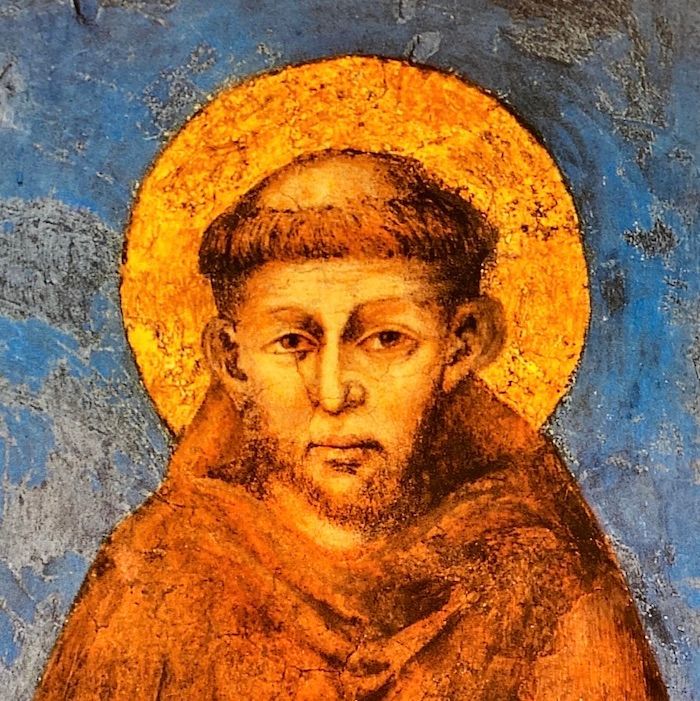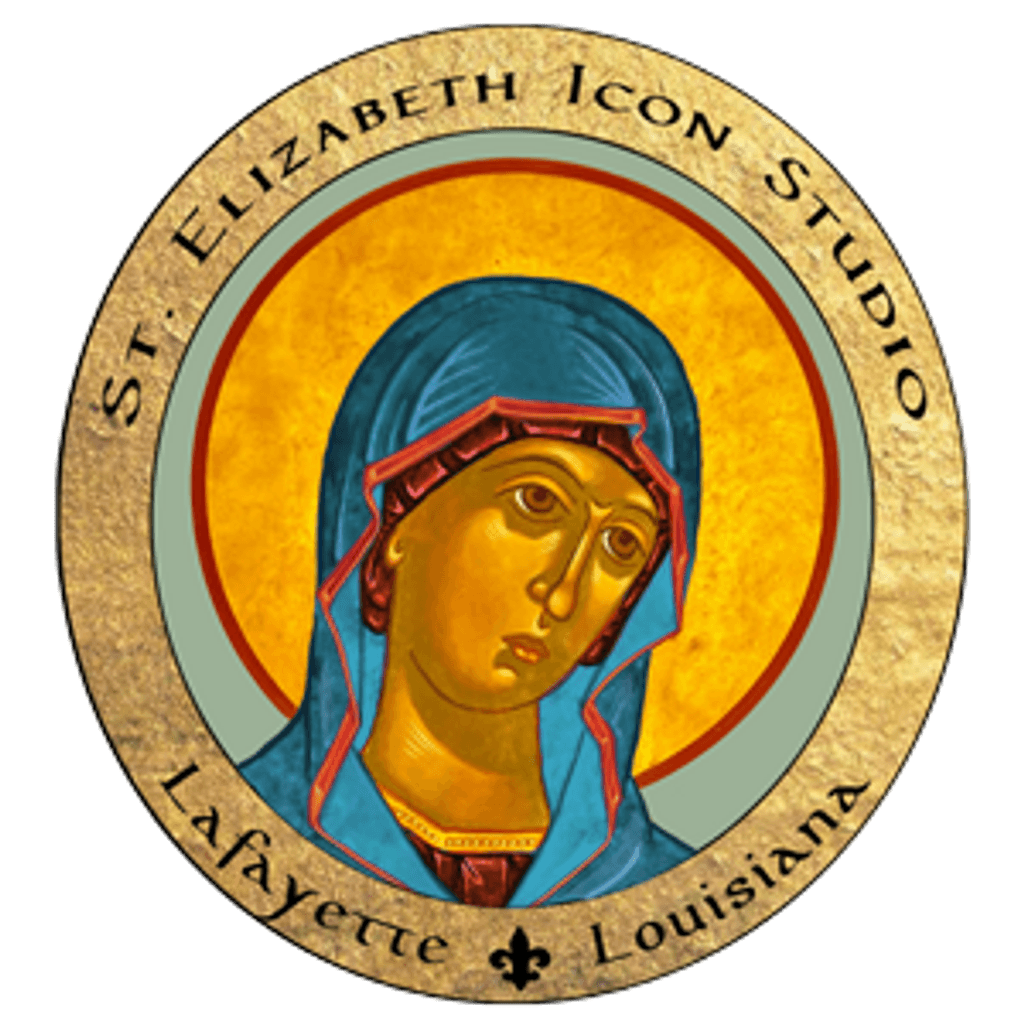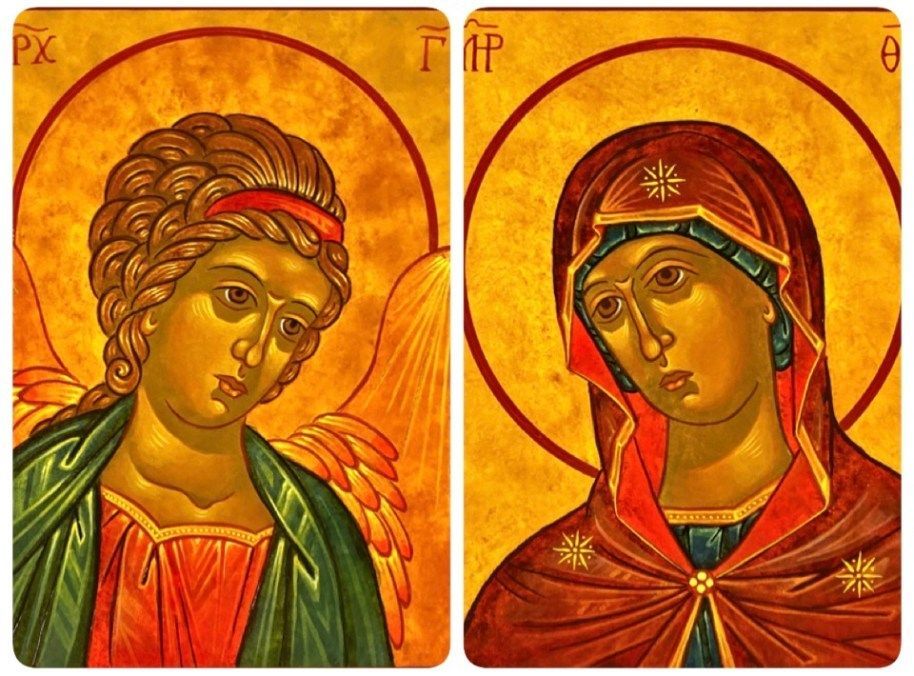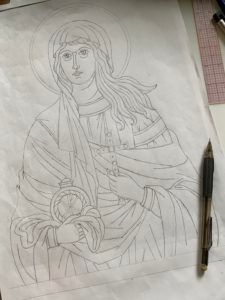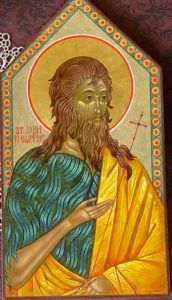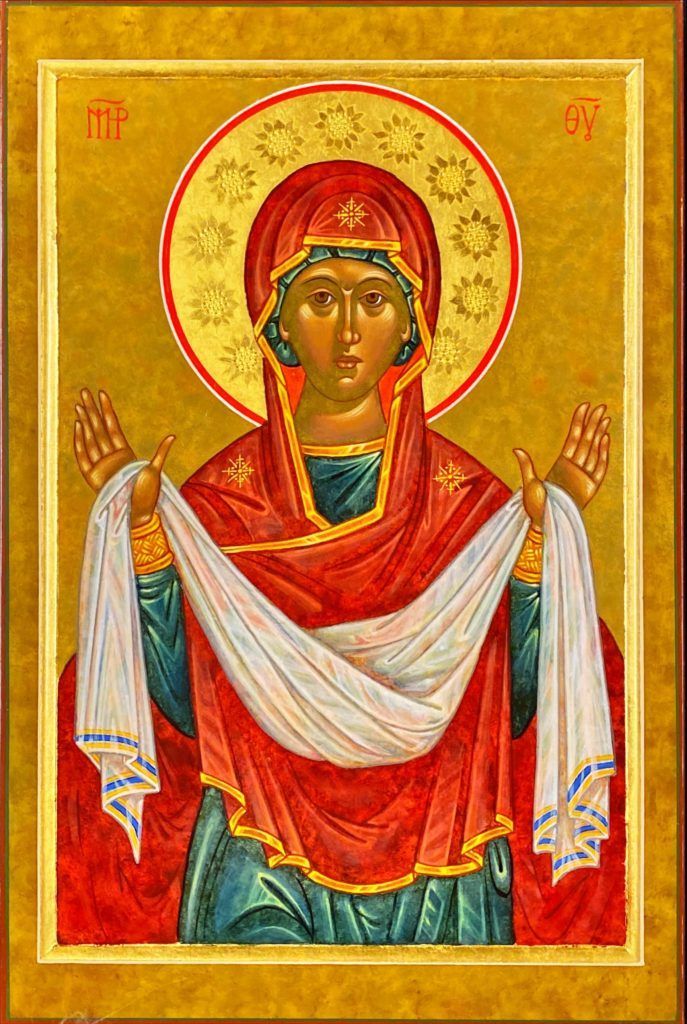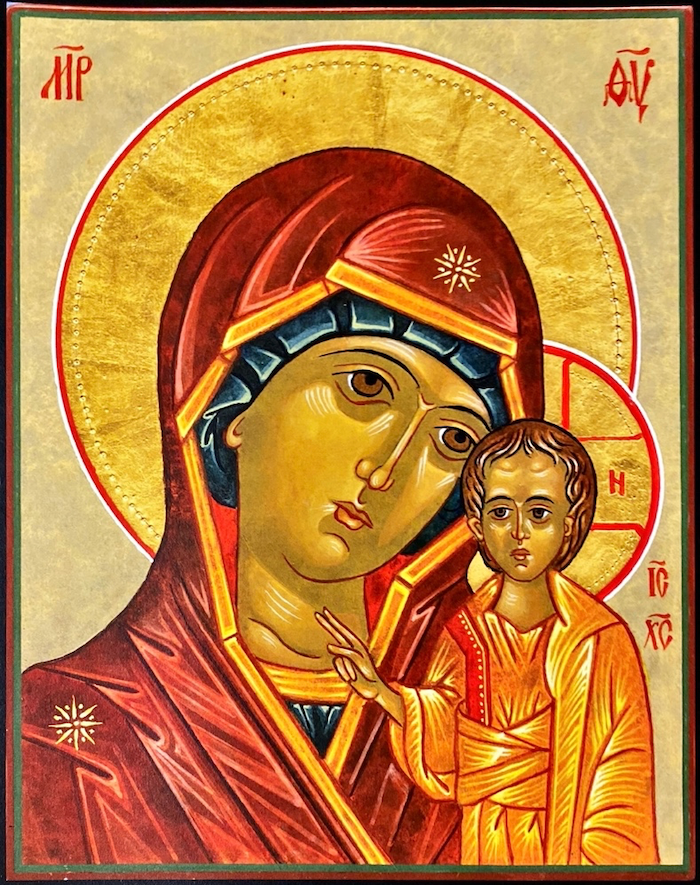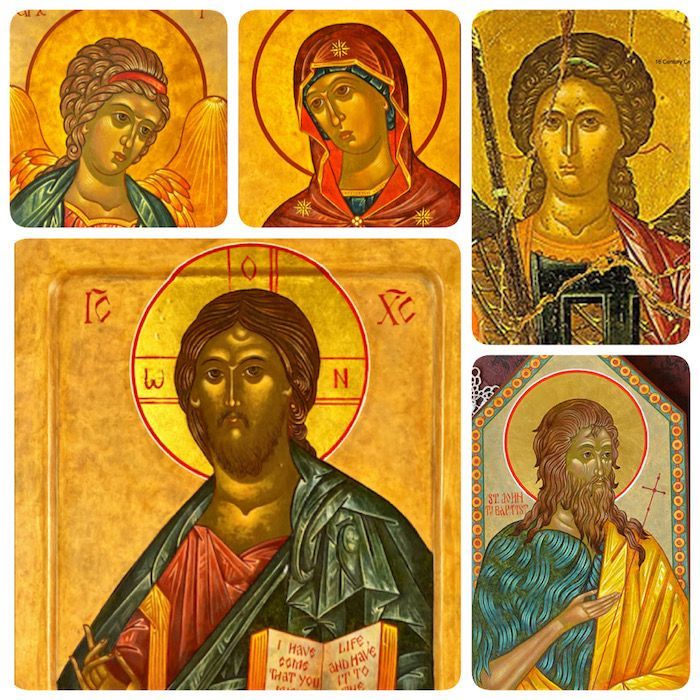The search For The Perfect Brush
The search for the perfect icon paintbrush
The most important tools in an iconographer’s supply box are our brushes. Many of us have spent years on a quest for “the magic brush,” hoping that once it was found all our brush strokes will be perfect and our brush control will be sublime.
That one perfect brush became our Holy Grail, and the search never ended. We watched hopefully for whatever brush our teachers held in their hands at that year’s workshop, and if possible, we bought one, thinking that that one held the key to our success. Over the years, if we persevered in our efforts, we learned that practice and diligence were the keys to mastering the art of brush control. But at the same time, we also learned that icon painting requires specialty brushes, and that some brushes work better than others
When I first began studying with Vladislav Andreyev in 1996, our brushes were all the Lowe-Cornell Mixtique line of brushes, composed of a blend of natural and synthetic hair. They were good all-purpose round brushes that we used for everything. Unfortunately, after about 10 years or so, Lowe-Cornell discontinued those brushes. (I still have a few of those old Mixtique brushes stashed away in my treasury of old brushes.) Today the Lowe-Cornell company itself is no more. A sad loss to the art form!
After the Mixtique brushes disappeared from the market, we icon painters spent several years trying various round brushes and liners: synthetics, natural hairs of various sorts, combinations of the two. None were perfect. My favorites at that time were the Raphael 8404 and 8408 kolinsky sable brushes. Unfortunately, they were far too expensive to give to students at workshops, so the students often got somewhat inferior, less expensive brushes that were not always easy to work with.
Then the Russian brushes came on the scene, especially the Roubloff line of kolinsky sable brushes. At first we could only get these brushes when some of the Prosopon teachers brought them back from Russia, but gradually we established contacts with Russia and were able to order them for ourselves. The Roubloff kolinsky sable brushes were much less expensive than other kolinsky sable brushes, and they were perfect for our work! As we used them, I realized that they wore out rather quickly, but they were inexpensive enough that it was easy to replace them.
I could end the story here and say that we all lived happily ever after, but then the war between Russia and the Ukraine broke out, and the US put an embargo on all imports from Russia. As soon as the embargo was in place, I realized that when my current supply of Roubloff brushes ran out, I was going to have a problem: Those were the brushes I counted on for all my students’ fine detail work. I needed to find a replacement quickly. So last year, in 2022, the quest for the perfect brush was once again on!
I had used Dick Blick Master Sable brushes in past years, and they were good, reasonably priced sable brushes, so I was hoping that they would be our replacement brush. Unfortunately, when I ordered a few trial sizes, they did not work at all the way the Russian brushes did. The cut of the hairs was different, and that affected their performance for our purposes. This forced me to really analyze the Roubloff brushes with a magnifying glass to understand exactly what it was that I was looking for in a replacement brush.
Being a modern (if somewhat ancient) woman of the 2020s, I turned to the internet and googled “best round watercolor brush.” As google searches always go, this took me down several different rabbit holes and left me with a list of possibilities — which I diligently explored by ordering numerous brands and lines and sizes of brushes to try. This search ended up being pretty pricey, and I now have a lot of brushes that don’t work, but I had to paint with each brush myself to determine whether it would serve us well. 2022 was The Year of the Brush!
The good news is that I finally found a pot of gold at the end of the rainbow: a brush that I love, love, love — the Davinci Maestro 37 line! DaVinci is a well-known German brush company, and their brushes are comparable to the French Raphael brushes or the British Winsor Newton brushes. The DaVinci Maestro 37 is a tapered, pointed, round kolinsky sable brush that is perfect for our work.

DaVinci brushes used for icon painting
Unfortunately, these brushes are more expensive that the Russian brushes, but I think they are also more substantially made and will last a longer time. In practical terms, it will be a difference of about $10 per brush. Our brushes are so important that I think this expense is justified for such a fine quality instrument. These are the brushes that I am using now and will provide to my students in 2023. They are available through our website, and I am keeping the cost down for our students as much as I possibly can.
For all of you accustomed to working with the Roubloff brushes, be aware that the numbering system of the DaVinci brushes is different. Below are the comparable sizes in both lines:
DaVinci #000 = Roubloff #0
DaVinci #00 = Roubloff #1
DaVinci #0 = Roubloff #1.5
DaVinci #1. = Roubloff #2
At the time of this writing, I still have the Roubloff #0 and the Roubloff #2 available in open stock. The Roubloff #1 is available in a set of three brushes, along with the #0 and the #2. The Roubloff #1.5 is completely sold out. Please see our
order form for a listing of all brushes that are currently available.
